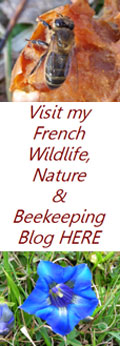
Sacred Ibis – an
unwelcome guest?
The Sacred Ibis
is a bird which normally inhabits tropical
Elegant,
graceful, pretty, but above all controversial because they just shouldn’t be
here, but here they are and current estimates from the ONCFS put their
numbers at around 5000.
The reason for
their presence is that back in the mid 1980’s some Ibis escaped from a
wildlife park in Brittany, (Branféré in Morbihan), and gradually they
successfully bred and established themselves, breeding in colonies,
occupying the same wetland habitats as Spoonbills and Egrets where there
appears to be no conflict, non the less they are an introduced species and
should probably be removed by virtue that fact alone.
The case against
them in the first instance is that they have been witnessed to eat Tern eggs
and although other species will also eat Tern eggs they are indigenous and
therefore form part of an acceptable predation which will have taken place
over hundreds, if not thousands of years, but any additional burden placed
on a native species, especially by an introduced species that is increasing
its population at such a rate has to be considered as a potential threat.
Ibis are in fact omnivorous and very often feed where waste is deposited
which brings us to the other reason that their presence may be seen as a
potential hazard for our native species. One particular area of concern is
that they frequently feed in agricultural discharges and open liquid manure
pits where they are the only known vertebrate in
In Loire Atlantique and Morbihan the Prefects
have authorised the destruction of the Sacred Ibis by members of the ONCFS,
(L'Office National de la Chasse et de la Faune Sauvage), by shooting of
adults between the dates of 15th
March and 15th
April. But of course, as in all things, not everyone is in agreement and an
Association for the Defence of the Sacred Ibis in
In Poitou-Charentes
they are relatively common in the Marais Poitevin and the coastal salt
marshes.
What this situation
highlights is the problem of introduced species, their possible impact on
native species either directly via predation or indirectly from habitat
destruction, competition for food resources and the risk of carrying a
disease that a native species is unprepared for. In France there are a large
number of such introduced species to be found in the wild that are already
causing serious problems, many of these are creatures that have been sold to
members of the public via the exotic pet trade and then either escaped or
have been released deliberately, this even includes putting goldfish in the
village pond which although it may seem to be a harmless enough act, the
reality is that they can be the direct cause for the destruction of
sensitive species already present such as the Great Crested Newt, so please
think twice and then think again before releasing anything. If you have an
exotic pet that has grown too large or you are unable to manage anymore, try
to re home it, and failing that consider having it humanly destroyed.

